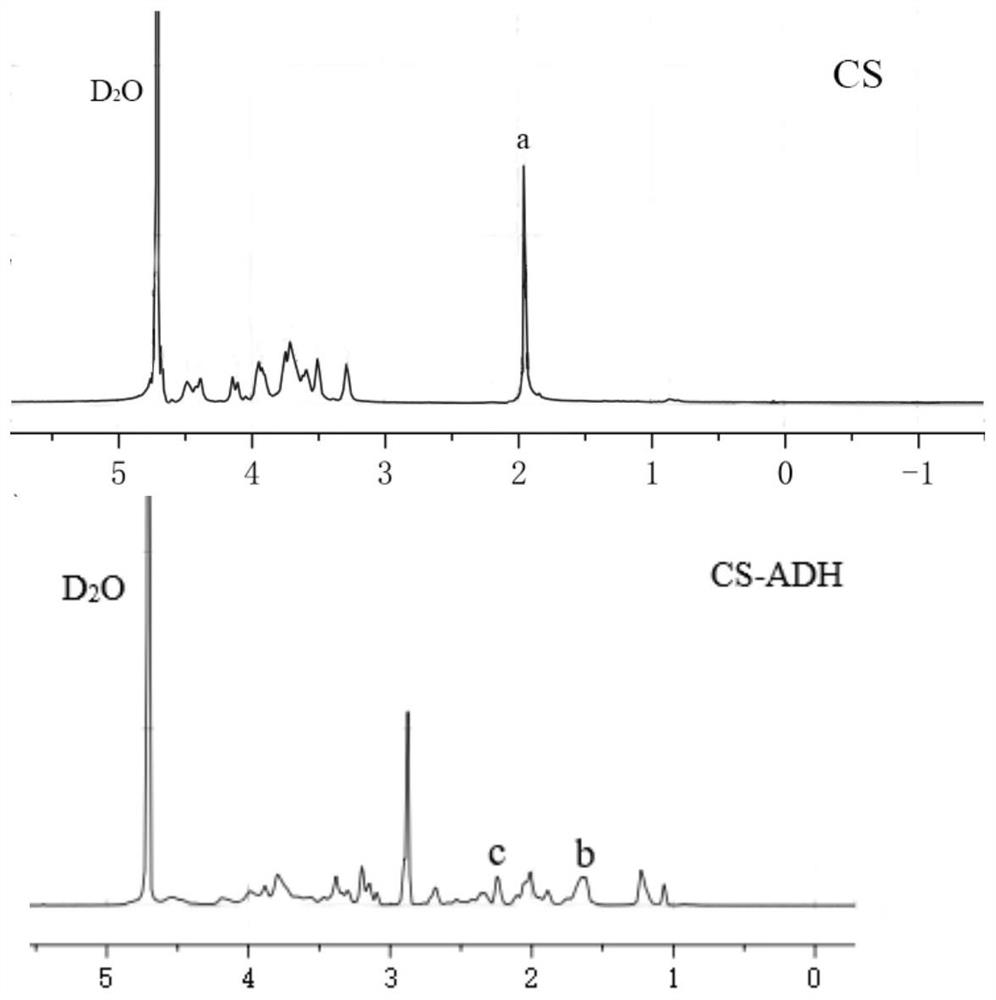A chondroitin sulfate polysaccharide probe based on upconversion nanomaterials and its preparation method and application
A technology of chondroitin sulfate and nanomaterials, which is applied in the field of probe synthesis, can solve the problems of weak up-conversion luminescence and long reaction time, and achieve the effect of enhanced luminous intensity and short reaction time
- Summary
- Abstract
- Description
- Claims
- Application Information
AI Technical Summary
Problems solved by technology
Method used
Image
Examples
Embodiment 1
[0060] A method for preparing a chondroitin sulfate polysaccharide probe based on up-conversion nanomaterials, comprising the steps of:
[0061] (1) Synthesis of CS-ADH
[0062] Accurately weigh 1 g of CS, dissolve it in 50 mL of water, add 4 g of EDC and 0.585 g of NHS, adjust the pH to about 6-7 with 0.1 mol / L HCl, and activate the carboxyl group in a water bath at 37 °C for 15 min; add 8.8 g of ADH, and use 0.1 mol of / L NaOH aqueous solution to adjust the pH to 6-7, after 24 hours of reaction in a water bath at 37 °C, dialyzed against water for three days (molecular weight cut-off = 4000 Da), freeze-dried to obtain CS-ADH solid, which was obtained by FTIR and 1 H NMR confirmed the coupling of CS to ADH.
[0063] figure 1 a and b are the infrared spectra of CS-ADH and CS, respectively. In the infrared spectrum of CS, the main observation is 1603.19cm -1 C=O characteristic stretching vibration peak of C=O; the C=O stretching vibration peak in CS-ADH appeared at 1649.71cm...
PUM
| Property | Measurement | Unit |
|---|---|---|
| particle diameter | aaaaa | aaaaa |
| concentration | aaaaa | aaaaa |
| thickness | aaaaa | aaaaa |
Abstract
Description
Claims
Application Information
 Login to View More
Login to View More - R&D
- Intellectual Property
- Life Sciences
- Materials
- Tech Scout
- Unparalleled Data Quality
- Higher Quality Content
- 60% Fewer Hallucinations
Browse by: Latest US Patents, China's latest patents, Technical Efficacy Thesaurus, Application Domain, Technology Topic, Popular Technical Reports.
© 2025 PatSnap. All rights reserved.Legal|Privacy policy|Modern Slavery Act Transparency Statement|Sitemap|About US| Contact US: help@patsnap.com



